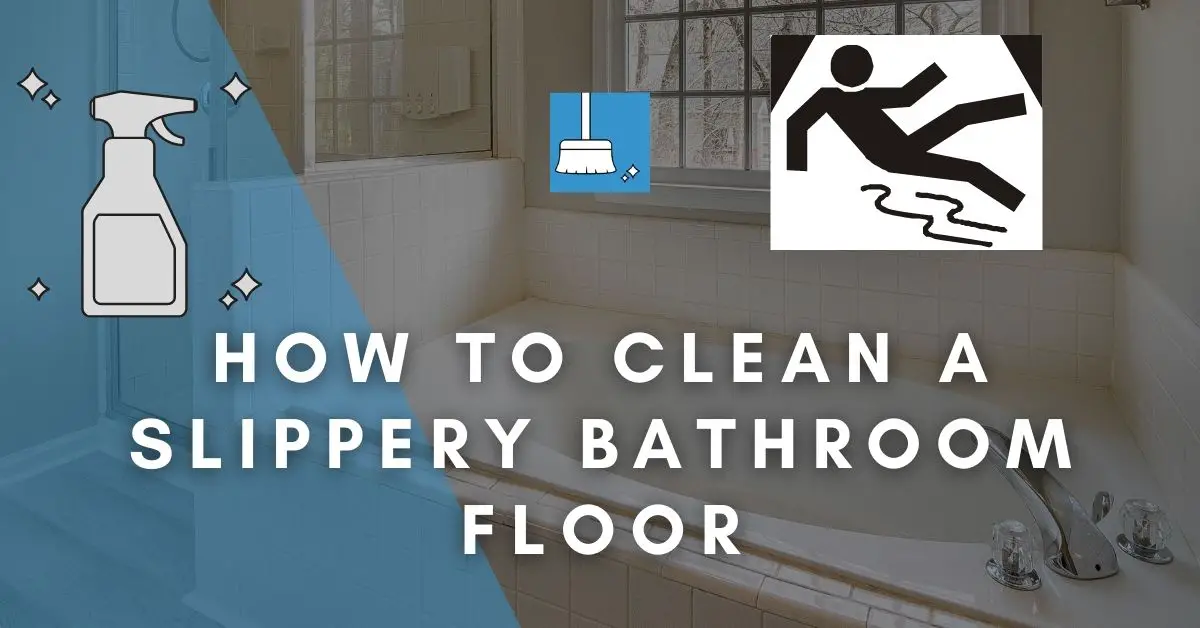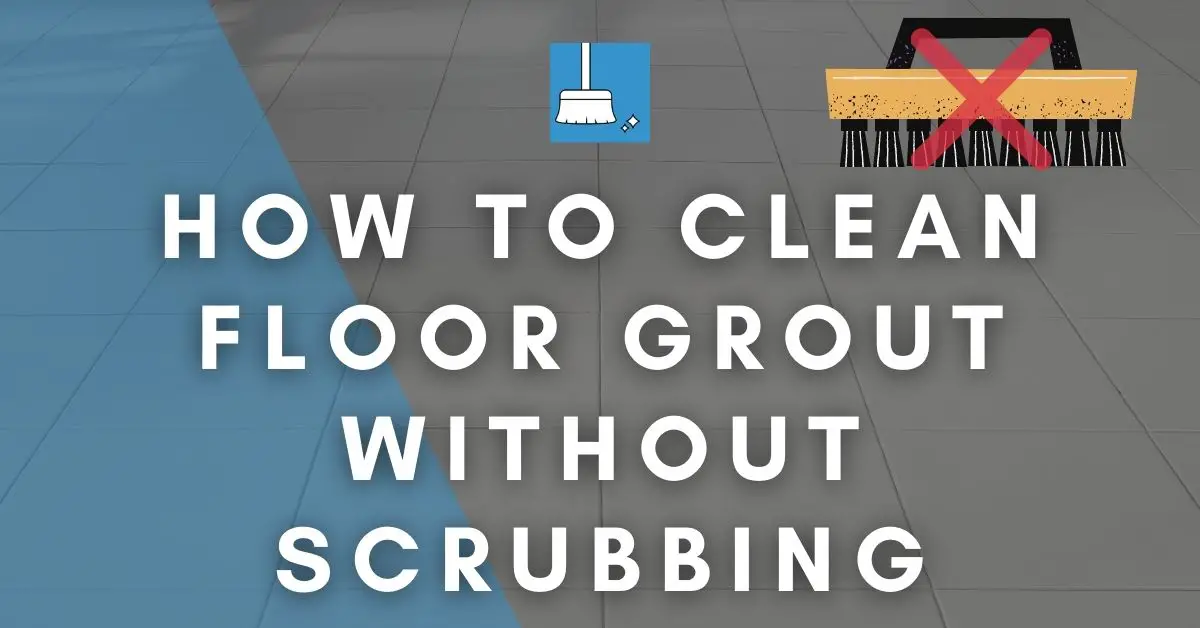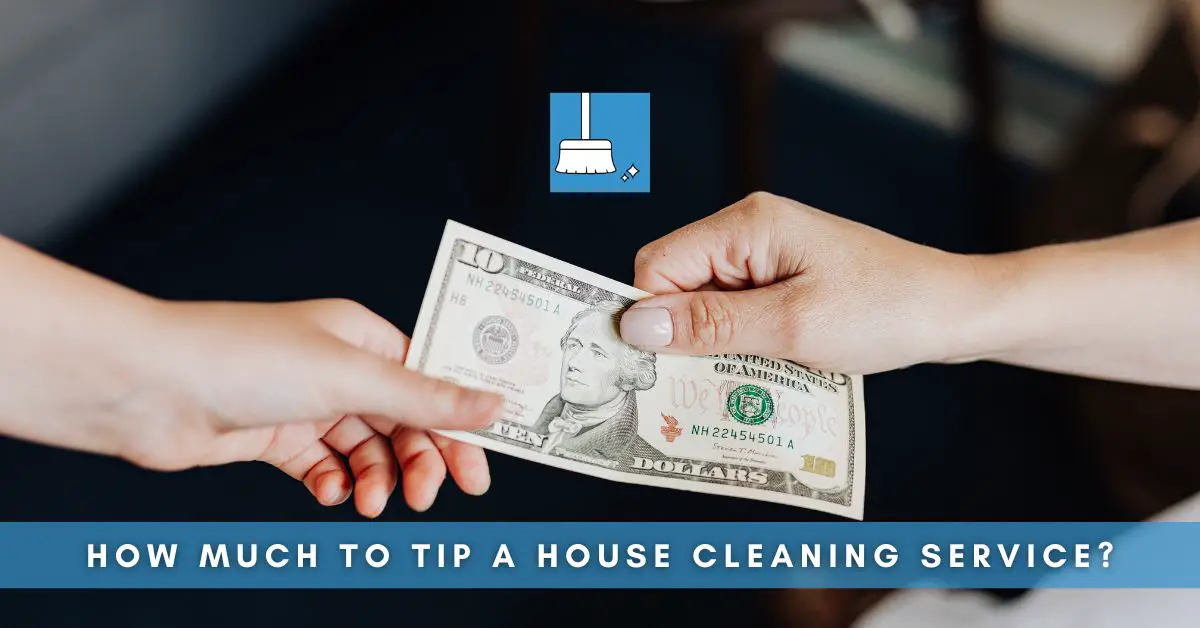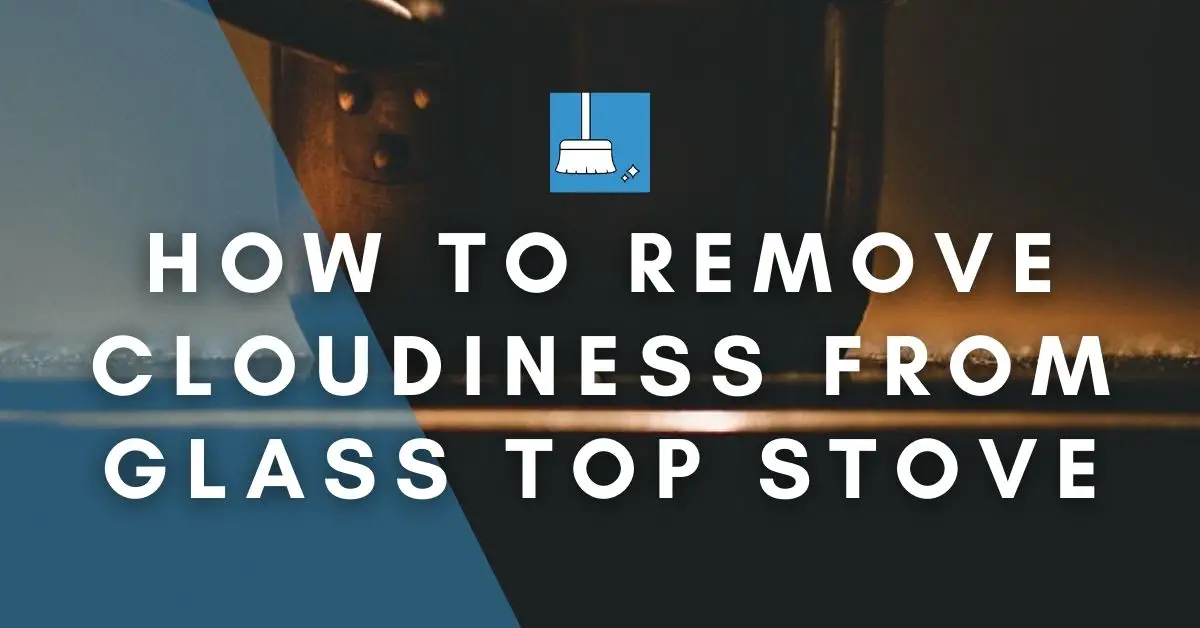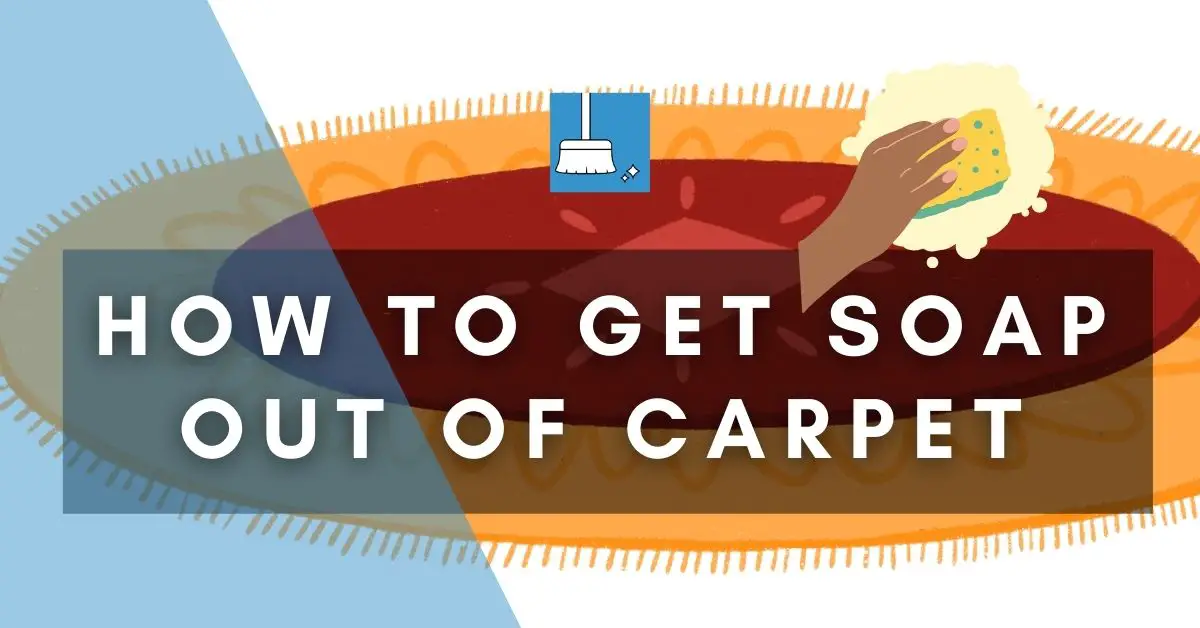I am sure you’ve had that experience at least once in your life when you slipped on the floor because the floor was wet or greasy. I surely have! In fact, not only have I slipped in the most awkward situations but have had injuries in my ankles and hips as well.
Certainly, you don’t want to slip as often as me and for that, you are looking for ways to clean that slippery bathroom floor of yours.
Preparing Your Slippery Bathroom Floor for Cleaning
1- Remove all items that will get in your way while you are cleaning. Remove trash cans, cleaning products, towels, rugs, mats, etc. to a safe place.
2- Sweep or vacuum to remove dust from your bathroom floor and get rid of cobwebs. If you use a broom/brush, collect the debris with a dustpan when you are done.
3- Rinse the floor with clean water to wash the remaining dust down the drain. You can use a hose or just run the shower.
4- Open all windows and switch on your fans to dry your floor and keep the bathroom well-ventilated.
After doing all these things, you can now proceed to clean your bathroom floor.
How to Clean a Slippery Bathroom Floor (7 Methods)
Method 1: Cleaning with Water & Soap
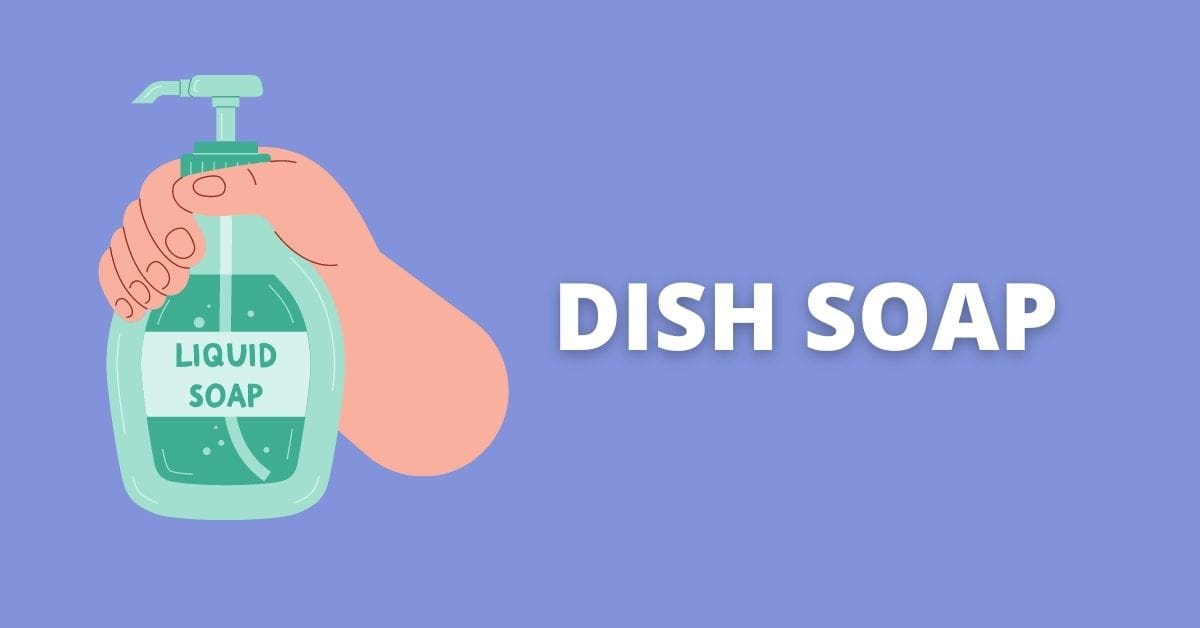
Whether slippery or rough, the easiest way to keep your bathroom floor (white, colored, or even black tiles) neat at all times and make it less slippery is to clean it regularly. This way it will be easy to keep away the soap scum and mold. This method is best used every day or once in two days.
YOU’LL NEED
Water
Dishwashing liquid
Brush
Spray bottle
Towel
STEPS
1- Pour some dishwashing liquid (like Dawn) into a spray bottle. The quantity you pour depends on the size of your bathroom floor.
2- Add some water which is just enough to mix the soap.
3- Spray your bathroom floor with this solution and scrub with a soft brush as you spray.
4- When you’re done, rinse your bathroom floor with water thoroughly.
5- Dry with a towel.
It’s really that simple!
Let’s see an advanced method.
Method 2: Cleaning with Commercial Cleaners
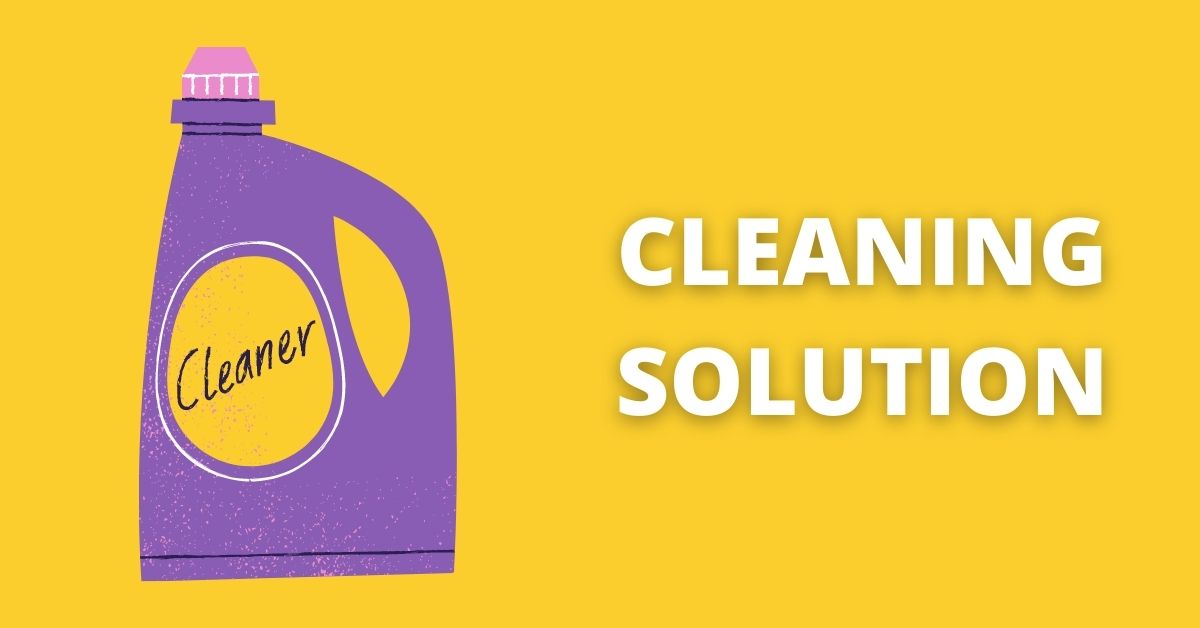
Floor cleaners can be found in your local stores and they are effective in getting rid of grime and grease from your slippery floors.
Lysol and Dawn are some of the popular cleaners you can use to clean your ceramic or porcelain tile floors.
Every cleaning solution will have usage instructions on the label. Make sure to go by them. However, the general procedure is:
A bucket
Cleaning solution
Mop
Vinegar (Optional)
Towel
STEPS
1- Get a bucket and pour 5 liters of water into it.
2- Add 3 cups of the commercial cleaner and mix it well.
3- Now soak your mop and start cleaning your slippery bathroom floor. Make sure the mop touches every corner. If the bathroom is very slippery and dirty, you’ll have to use a soft brush to scrub the floor.
4- When you are done cleaning, rinse your bathroom floor with water thoroughly.
5- Dry your floor with a towel.
You can also add a cup of vinegar. This will get rid of mildew and bacteria.
That was a cakewalk!
Now if you don’t want to spend money on a commercial cleaning solution, here is another method for you.
Method 3: Cleaning with Vinegar
Vinegar is effective in getting rid of grease stains while at the same time giving friction to the floor surface. It also disinfects the bathroom floor and deodorizes. There are two ways of using Vinegar:
Option A: Cleaning with Vinegar and Water
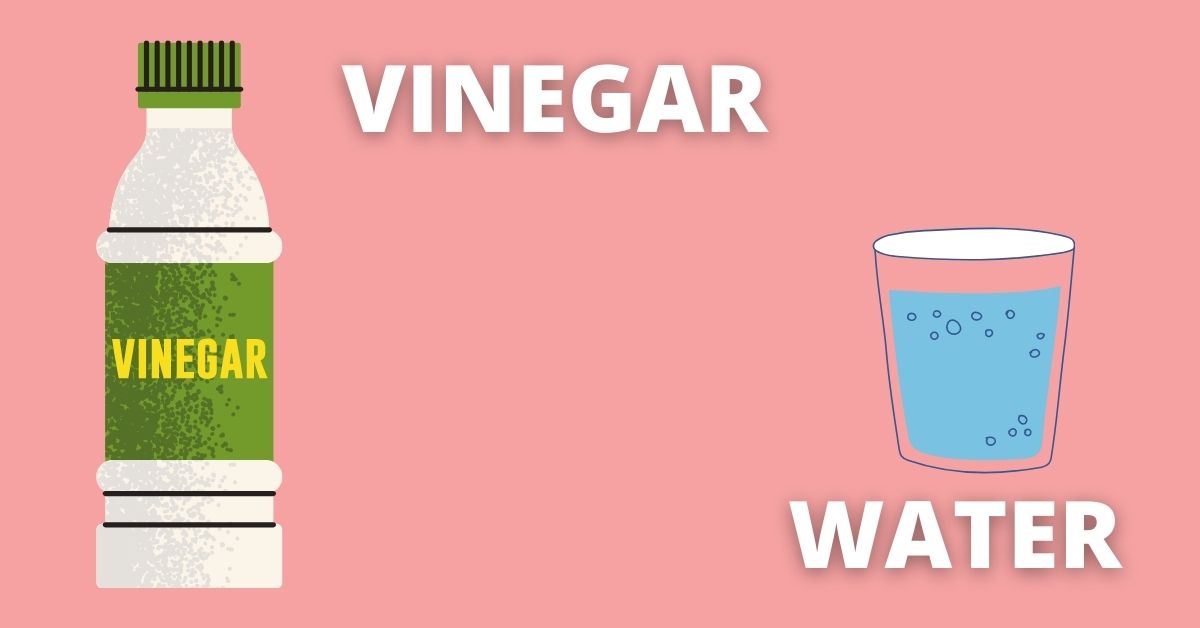
YOU’LL NEED
Bucket
Vinegar
Water
Sponge
Towel
Scrub brush (Optional)
STEPS
1- Get a bucket and mix equal parts of vinegar and water.
2- Dip a sponge in the solution and rub your bathroom floor with it. Make sure you clean the corners and rub the stains extra hard or use a scrub brush.
3- After cleaning, rinse with water thoroughly.
4- Dry the floor with a towel.
Option B: Cleaning with Vinegar, Salt & Soap
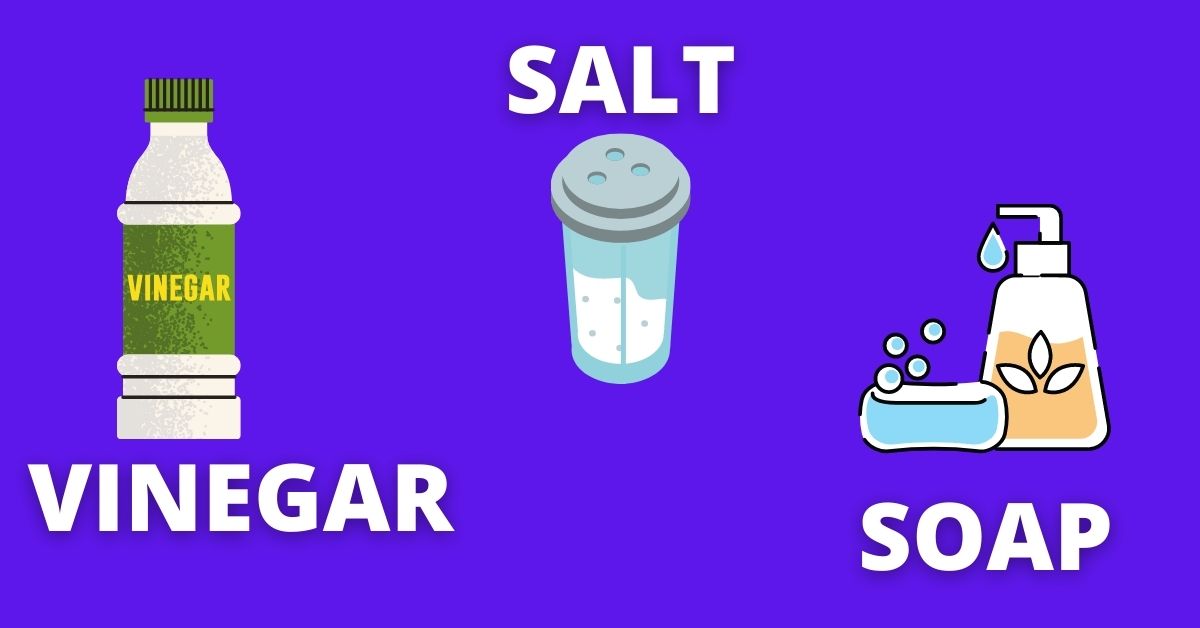
This method is best for bathroom floors that are extremely dirty and slippery.
YOU’LL NEED
Vinegar
Hot water
Spray bottle
Salt
Dish soap
Sponge
Towel
STEPS
1- Pour a cup of vinegar and one cup of hot water into a spray bottle.
2- Add one cup of salt and two tablespoons of dish soap to the vinegar and water solution. Mix very well for about 3 seconds.
3- Spray it generously on your bathroom floor, while paying attention to grout lines.
4- Allow the liquid to sit on the floor for about 10 minutes.
5- Wipe the floor with a damp sponge thoroughly.
6- Rinse with water and dry with a towel.
Method 4: Cleaning with Lemon Juice
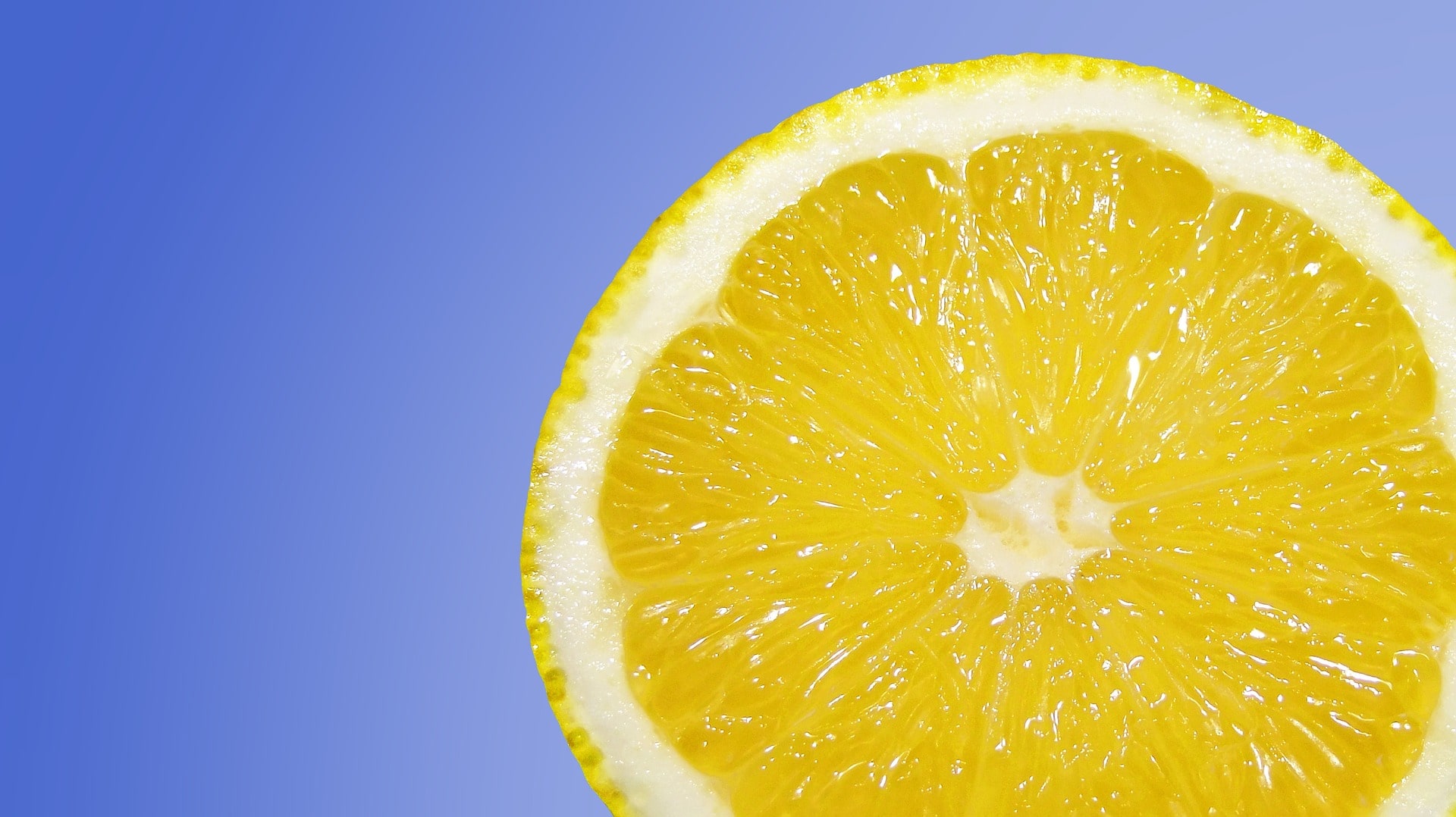
Lemons have Citric acid in them that is antibacterial and antiseptic, so it acts as a natural bleach. If you have greasy floors that make you slip often, the acid in lemon juice will cut through the grease.
Additionally, the refreshing citrus smell of lemon will freshen up the bathroom.
YOU’LL NEED
Spray bottle
Lemon juice
Sponge
Warm water
Towel
STEPS
1- Pour lemon juice into a spray bottle. The quantity of lemon juice you need depends on the size of your slippery bathroom floor.
2- Spray the juice on your bathroom floor and let it sit for 5 minutes. Spray extra over the rust stains and grime. The acid in the lemon will start its cutting action to remove that rust.
3- Wipe the floor with a damp sponge.
4- Rinse the floor with warm water.
5- Dry the floor with a towel.
BONUS TIP: Pour some hot water and lemon juice into the drain and it will start smelling fresh.
Method 5: Cleaning with Baking Soda
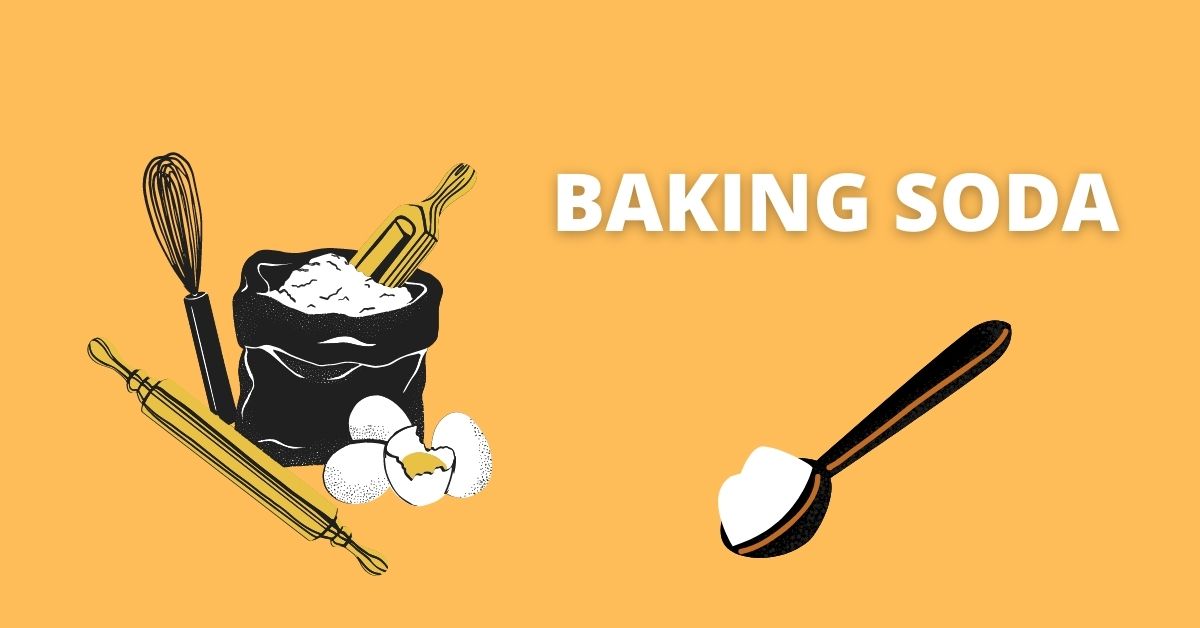
Baking soda is mildly coarse in texture, so not only does it clean bathroom floors effectively, it gives the floor a little friction that makes it less slippery.
There are 2 ways to use Baking soda:
Option A: Cleaning with Baking Soda and Hydrogen Peroxide
Hydrogen Peroxide is non-toxic in nature and safe for kids. It adds to the cleaning action of baking soda. However, never mix Hydrogen peroxide with Vinegar as it will produce a chemical reaction (harmful gases).
YOU’LL NEED
Baking soda
Hydrogen peroxide
Spray bottle
Mop/rag
Towel
STEPS
1- Put half a cup of baking soda into a spray bottle. Add 1/4 cup of hydrogen peroxide and shake to mix for 20 seconds.
2- Spray the mixture generously over the slippery bathroom floor and let it sit for about 10 minutes.
3- Wipe with a mop or rag, cleaning the floor, corners, and grout lines.
4- Rinse with clean warm water and dry with a towel.
The next option is:
Option B: Cleaning with Baking Soda and Lemon
YOU’LL NEED
Baking soda
Lemon
Towel
STEPS
1- Sprinkle baking soda on the slippery floor.
2- Cut lemon in half. Use each half to scrub your floor and squeeze the juice out as you scrub.
As an alternative to sprinkling baking soda on the floor first, you can coat each piece of lemon half (the pulp side) with baking soda and then scrub your bathroom floor with it.
3- After scrubbing with the lemon, rinse your bathroom floor with water.
4- Dry the floor with a towel.
Method 6: Cleaning with Bleach & Water
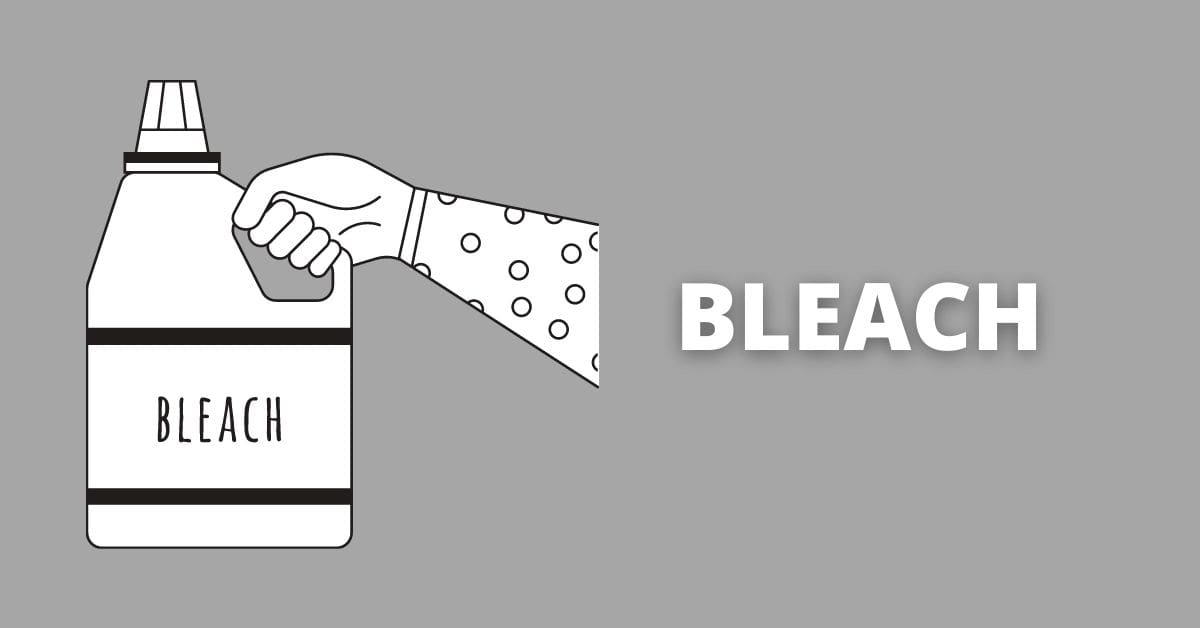
Bleach kills germs on your slippery bathroom floor and keeps it free of mildew and mold.
Our Disinfecting Bleach, which is also known as our Clorox Regular Bleach, can clean, disinfect and deodorize sinks, countertops, bathtubs, showers, floors, vinyl, and glazed tile.
– Krystal from Clorox Consumer care team
YOU’LL NEED
Bleach
Water
Bucket/bowl
Sponge/brush
Gloves
STEPS
1- Wear your rubber gloves because bleach can damage your skin.
2- Mix 3 parts water and 1 part bleach in a bucket or small bowl.
3- Apply the solution to the floor by scrubbing with a sponge or brush thoroughly, touching every corner and grout line, and letting it sit for 2 minutes.
4- Rinse the floor well with water.
5- Dry the floor with a towel and keep the area ventilated.
Method 7: Cleaning with Ammonia
Household Ammonia is an ingredient in many cleaning products on the market. It can clean tiles very well. It breaks down grime and stains caused by oils and fats. (1)
You should use this method in the last if everything else fails because inhalation of, ingestion of, or skin/eye contact with Ammonia causes reactions in the body resulting in damage. (2)
Also, Ammonia can cause the tiles to dull over a period of time.
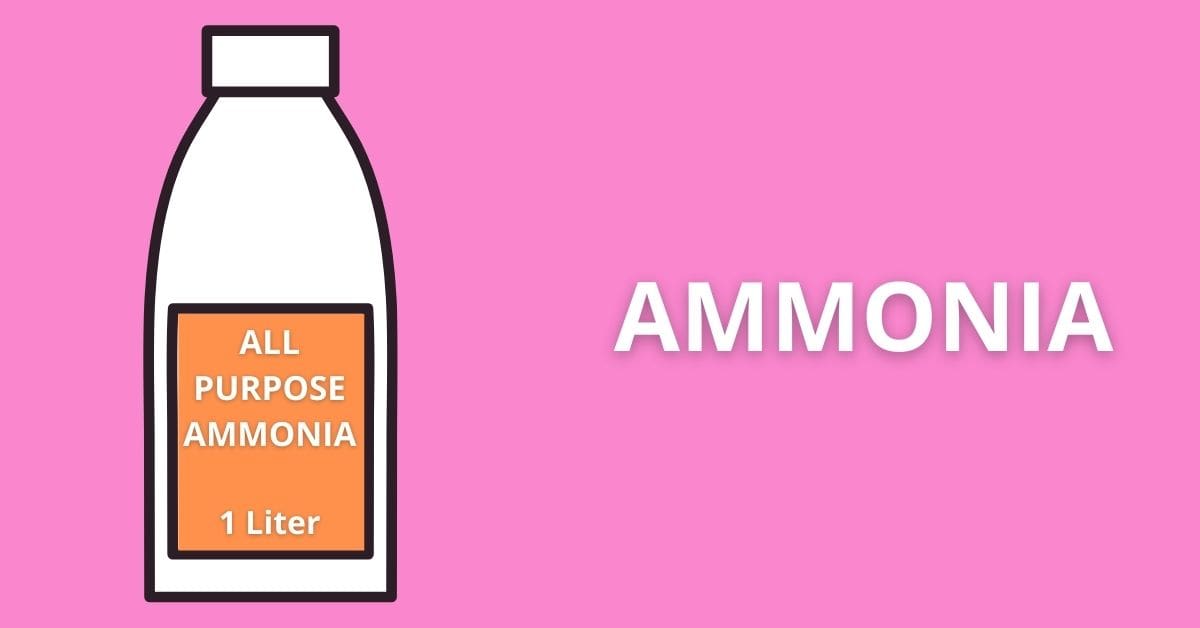
YOU’LL NEED
Ammonia
Water
Gloves and safety glasses
Brush
Towel
STEPS
1- Wear rubber gloves and safety glasses to protect your skin and eyes.
2- Pour 1/4 cup of ammonia into a gallon of water.
3- Apply the solution to your floor and scrub with a brush as you apply.
4- Rinse thoroughly with water when you are done.
5- Dry the floor with a clean towel.
NOTE: Do not mix bleach and ammonia while cleaning your slippery bathroom floor. It produces toxic fumes which is harmful for health. (3)
Method 8: Cleaning with Shaving Cream
When urine gets collected on the bathroom floors, it starts to smell awful and also makes the floor slippery. Shaving can effectively clean such surfaces.
YOU’LL NEED
Shaving cream
Towel
STEPS
1- Clear the surface and apply a thin layer of shaving cream to the bathroom floor.
2- Let the foam rest for 15 minutes.
3- Wipe away the foam with a rag and rinse the floor.
4- Let the floor air dry.
Why Do Bathroom Floors Slip?
Here are some of the major causes that make your bathroom floors slippery:
1- Oil and Grease: Using greasy mops or dirty water to re-mop the bathroom floor is one of the leading causes that make the floors slippery. Sometimes, a skin lotion or some oil can sill onto the floor, and this may spread.
2- Shower Curtains: Those curtains that are hung poorly allow the water to spill out of the shower area and wet the bathroom floors making them slippery.
3- Unclean Floors: Excess water, soap scum, beauty products, talcum powder, and hair dye can make bathroom floors slippery.
4- Leakages: Damaged pipes and faucets in a bathroom can leak, causing the floor of the bathroom to become wet most of the time.
5- Overflows: Clogged toilet or sink in a bathroom can cause the water to overflow onto the floor, making it slippery.
Injuries Caused By Slippery Bathroom Floors
Here are a few common injuries that can be caused by slipping on hard floors…..
| Spinal cord injury |
| Knee or ankle injury |
| Broken bones |
| Wrist or elbow injury |
| Neck, Back, or Shoulder injury |
| Muscle sprains or strains |
| Organ or Nerve damage |
| Traumatic brain injury (TBI) |
| Paralysis |
Tips For Making Your Floor Less Slippery
1- Clean your bathroom floor as frequently as possible. It is best to make a habit of cleaning your floor dry after every shower. More importantly, is to keep the floor dry.
2- Some tiles also slip more than usual. If these are the type of tiles in your bathroom, you can apply non-slip treatment solutions to make them less slippery.
3- You can use shower mats and non-slip stickers in your bathroom.
4- You can use 2 shower curtain liners, one falling inside the tub and the other falling outside of it. This will help reduce water spillage from the shower.
5- When finishing the bathroom floor, use a “slip-resistant” finish and apply 3-4 coats of it.
6- When refinishing a floor, tools such as mops and buckets should be thoroughly cleaned before you start the work.
7- If you are replacing your ceramic floor tiles or marble ones, look for the ones that are matte (non-glossy) and less smooth. Usually, anti-skid tiles will be your friend.
TIP: If you have elderly people in your home, install handrails near the shower area and the toilet seat, so that they can hold on to the rails while standing as well as getting up.
Conclusion
Not only do slippery and wet floors allow accidents to happen but also attract dirt more easily than dry ones. So making it a habit to frequently clean your slippery bathroom floors with any of the above methods will be a wise decision.
The methods are tried and tested. So now that you have so many options, get to work, boy!
Cheers!

